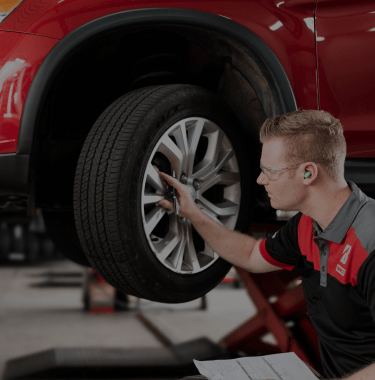TPMS Service
A Tyre Pressure Monitoring System (TPMS) is a safety feature that helps drivers maintain optimal tyre pressure, reducing the risk of blowouts, improving fuel efficiency, and extending tyre life.
With the ability to enhance handling and overall driving performance, TPMS is an essential feature for any vehicle, especially for drivers covering long distances.
Professional installation and regular maintenance ensure the system functions effectively, providing peace of mind on the road.
TPMS enhances handling and overall driving performance, making it especially valuable for long-distance drivers by maintaining proper tyre pressure, improving safety, and boosting fuel efficiency..
Professional installation and regular maintenance of TPMS components will ensure the system functions effectively, providing peace of mind on the road.
What is TPMS and why is it important?
TPMS stands for Tyre Pressure Monitoring System. It is an electronic system that monitors the air pressure in a vehicle’s tyres and alerts the driver when tyre pressure drops below the optimal level.
The main function of TPMS is to ensure tyres remain inflated at the correct pressure, reducing the risk of tyre failure, improving fuel efficiency, and extending tyre life. This system enhances vehicle safety by preventing blowouts and handling issues caused by low tyre pressure.
In Australia, where long drives are common, maintaining a properly functioning TPMS is essential for safety and performance. If your vehicle is equipped with TPMS, regular servicing ensures the system continues to monitor tyre pressure accurately. From battery replacements to sensor recalibrations, our expert mechanics provide the necessary diagnostic, maintenance and repairs capability to keep your TPMS operating effectively. Visit your local Bridgestone store to learn more about TPMS servicing and how we can help keep your system in top condition.
Tyre pressure monitoring systems

What are the different types of TPMS?
Direct TPMS: Sensors inside each tyre measure air pressure and send real-time data to the vehicle’s onboard computer.
Indirect TPMS: Utilises the vehicle’s ABS or wheel speed sensors to estimate tyre pressure by comparing wheel rotation speeds.
Note: Only Direct TPMS is serviceable.

What should I do when a TPMS warning light is illuminated?
If your TPMS light illuminates and remains solid, the pressure inside one or more of your tyres are not inflated to manufacturer standards and should be looked at by your closest tyre specialist.
If after correcting tyre pressures, the TPMS light remains illuminated - there maybe another issue with the system. Contact your local Bridgestone store for advice.
What are some of the most common services required for TPMS?
Battery Replacement: TPMS sensors contain internal batteries that typically need replacement every 5-7 years. As sensor batteries are integral to the sensor and cannot be replaced separately, the entire sensor must be changed.
Sensor and Valve Stem Replacement: Sensors and valve stems may become damaged or worn, requiring replacement. We recommend that TPMS valve stems, both rubber and metal, are replaced at the time of tyre replacement.
TPMS Recalibration: After tyre changes, repairs, or wheel rotations, TPMS systems often need recalibration.
Diagnostics: Identifying and resolving issues when the TPMS warning light remains illuminated.
Frequently asked questions
-
What is a Tyre Pressure Monitoring System TPMS?
Tyre Pressure Monitoring System, also known as TPMS is an electronic system that monitors the air pressure in a vehicle’s tyres and alerts the driver when tyre pressure drops below the optimal level. -
What is the purpose of TPMS?
The main function of TPMS is to ensure tyres remain inflated at the correct pressure, thereby reducing the risk of tyre failure, improving fuel efficiency, and extending tyre life. This system enhances vehicle safety by preventing blowouts and handling issues caused by low tyre pressure. -
How do I know what my tyre pressures should be?
You can usually find this information on the driver’s side door frame, inside the fuel door, in the glove box, or in your car’s manual. Refer to this page for more information on how to check your tyre pressures.
The following stores offer tpms
-
List View
Sorry, we can’t seem to find any store in that area.
Try broadening your location radius above or give us a call on 131 229 if you need urgent assistance.

